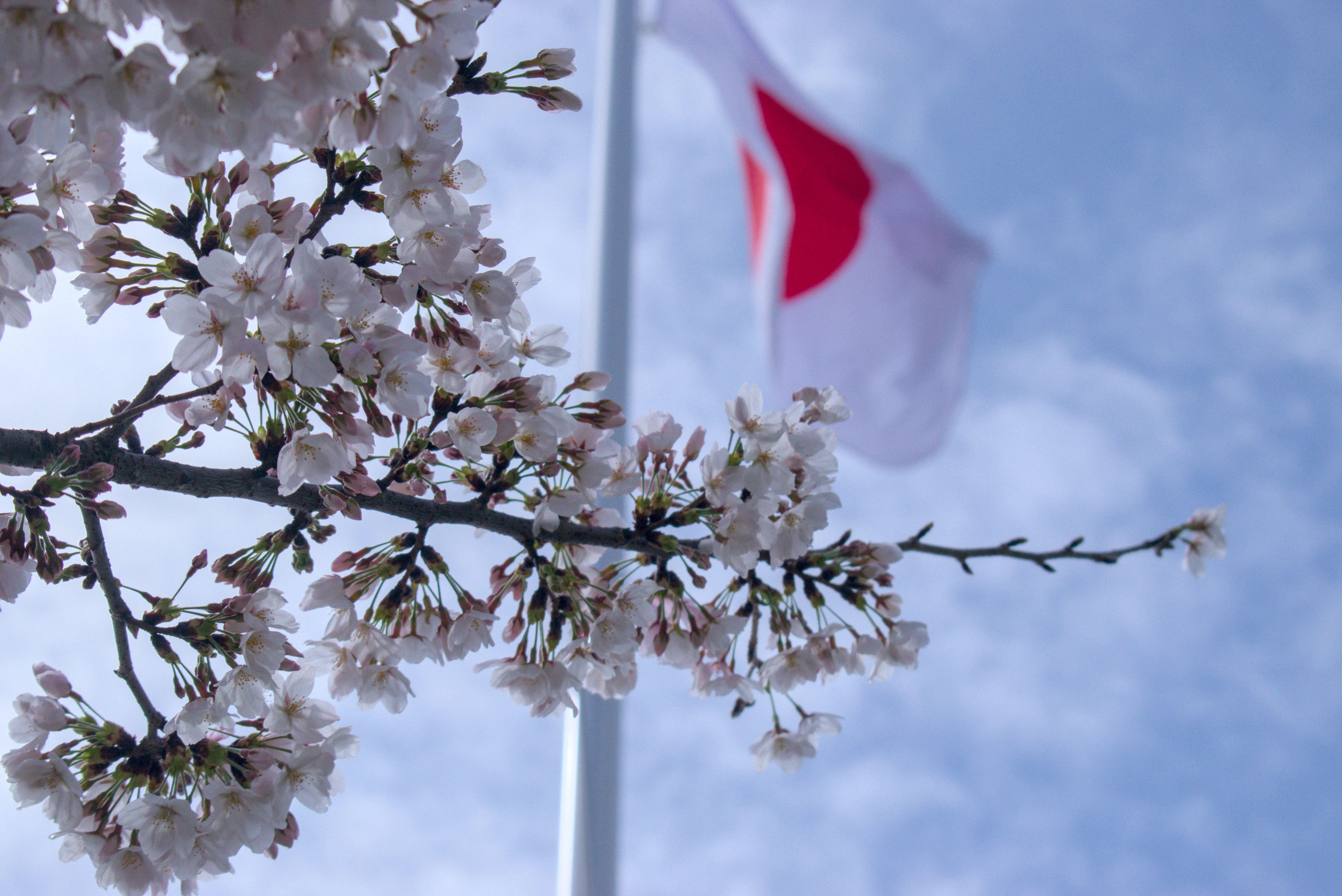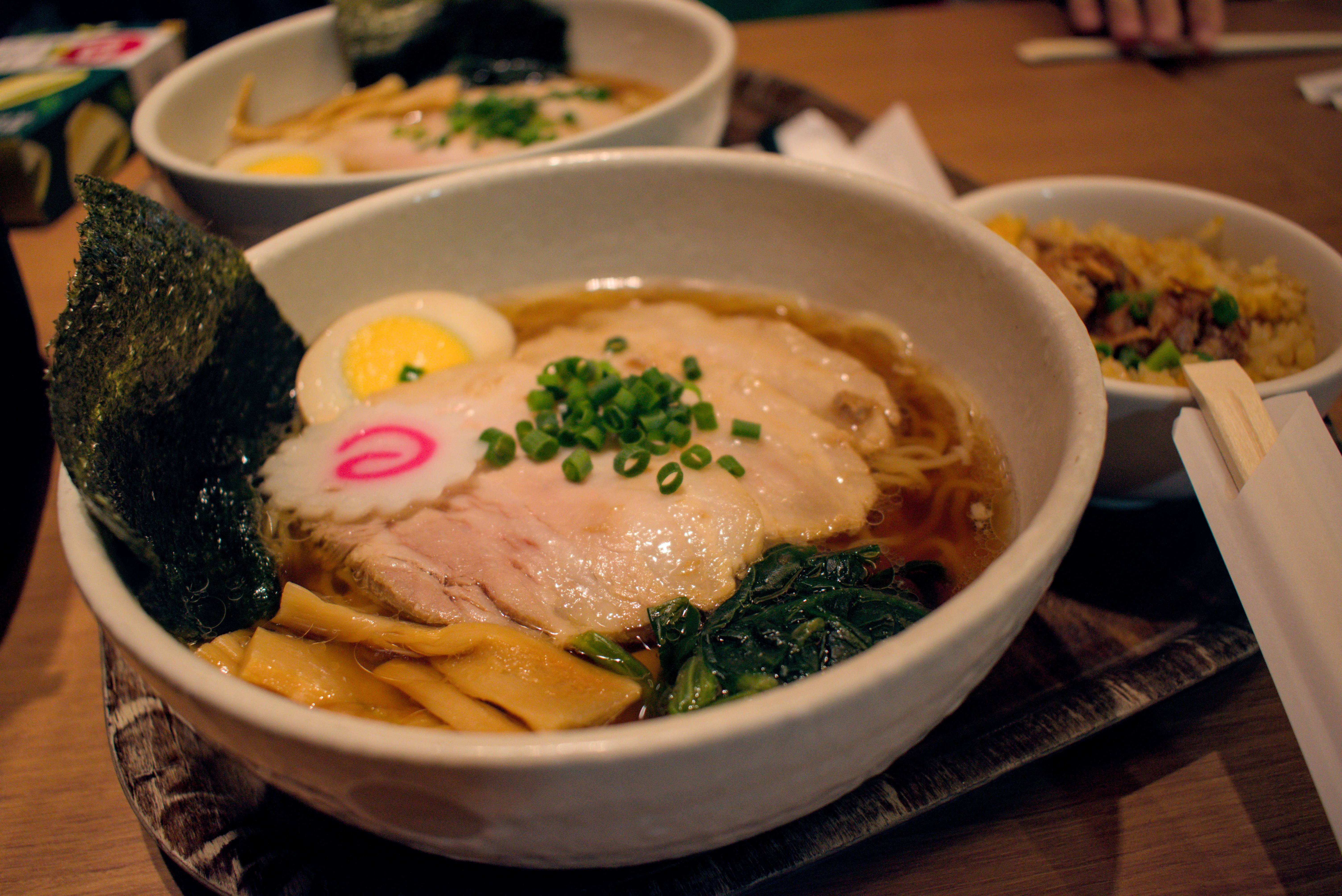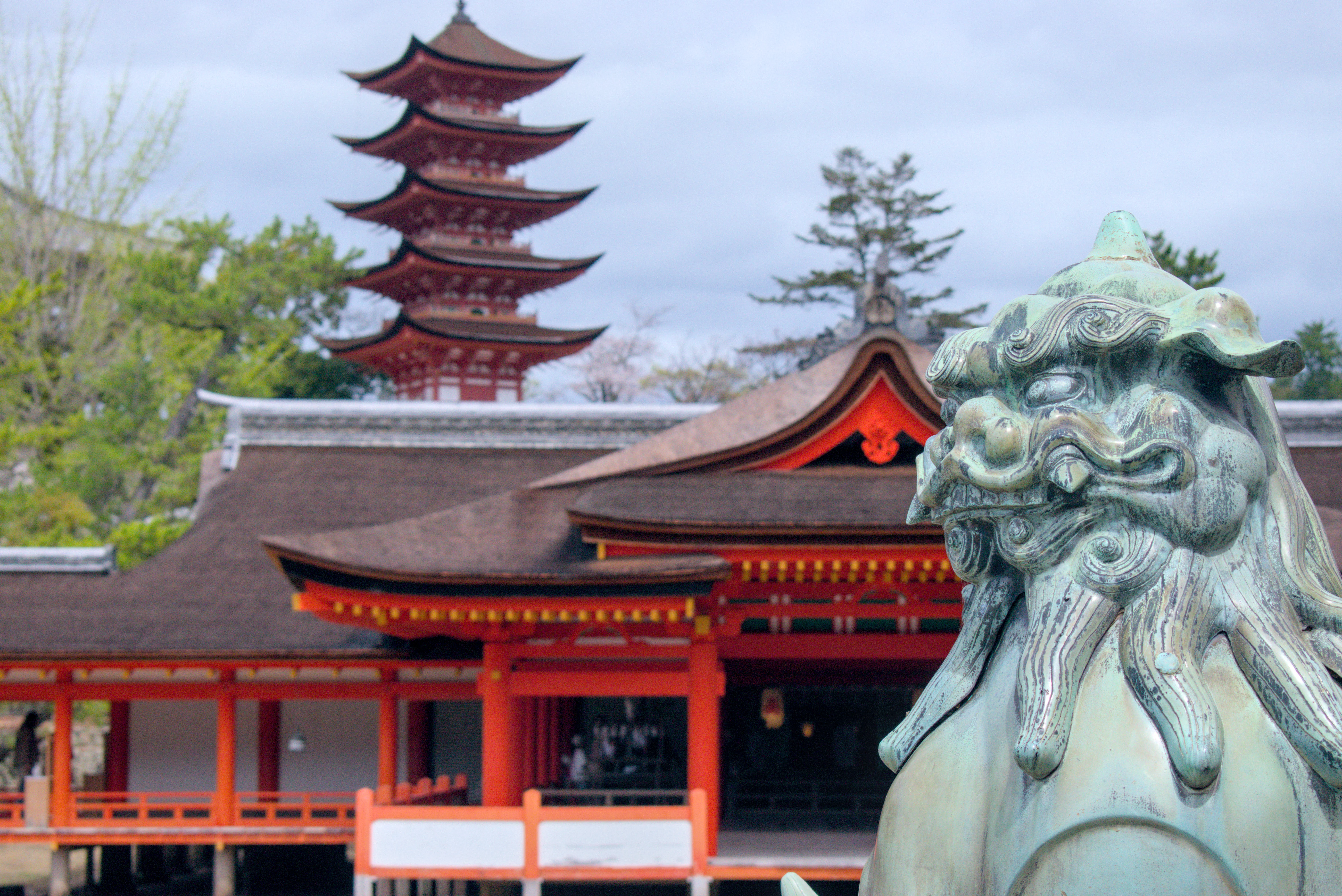Japan Travel Starter Pack - Important Tips Before Going to Japan
I wanted to share some tips about Japan here as I have been there a few times and had to look for a lot of information on traveling to Japan.

Bow
Being polite and respecting local customs is very important, especially in a country like Japan where etiquette is one of the most important things. Japanese use bow to greet, to thank, to say a request...it's everywhere! Don't be ashamed or scared of it and make sure to bow a lot. Bowing is just a normal part of Japanese communication.
Smoking at many frequented places is prohibited
There are special sections for that.

Learn a bit of Japanese
Most people (no matter if old or young) can’t speak English or their accent is really strange. Sometimes I rather switched into Japanese where I understood more than from their Engrish. In big cities and at some places where tourists are expected the staff usually speaks English though. I made a list of the most useful phrases that I was glad I knew in Japan, you can read it here.
Japan is one of the safest countries in the world
Walking around the city during the night is perfectly OK even for a woman.
High-tech restaurants
When they give you a small electronic box after you order a food at a special machine in a restaurant, just sit and wait when the box starts ringing, that means your meal is ready and you can go and take it.

Sockets
People from Europe need an adapter for the electric socket, the sockets in Japan are the same as in the USA.
Wi-fi
Free wi-fi is present in every big city or near some shops (each 7-Eleven for example has a free wifi).
Thieves (not really)
Don’t leave your things around during the night when camping, tanuki might steal them.
Wild animals
There are wild monkeys and bears in certain parts of Japan. Especially some mountain trails might be dangerous. Also be careful, there are dangerous giant hornets that kill many people every year and they are extremely aggressive. One attacked us near Kamikochi. It started spraying us with its poison! I smashed it away with a hitchiking board. Luckily, its friends were not nearby. Be prepared for many mosquitoes, too, during the summer.
Cicada
You know that sound of higurashi cicada from almost every anime? Yes it’s really everywhere in Japan
When to visit
When visiting Japan in summer, prepare for an extreme humidity and warmth with a lot of heavy rains (wear light clothes, outdoor sandals, and a raincoat at least for your backpack). The best time to visit Japan is in Autumn and summer to avoid the extreme weather. Also, there is the famous sakura blooming time in summer and red leaves time in autumn. Both times are great for sightseeing because the historical places look incredibly beautiful! be prepared for a lot of people though, especially cherry blossoms time (end of March and beginning of April) is quite crowded.

Chopsticks
Learn how to use chopsticks, they’ll give it to you everywhere, even in a shop when you buy an instant ramen. One Japanese guy told us that they are good because they make you eat more slowly than with a fork and knife. That is actually good for your stomach! It is not as hard as it looks like to eat with them! Also don't point at things or people with them, don't stick them into your food, and don't carry food from one bowl to another with them. These things are not very polite.
Tokyo is just the beginning
Definitely don’t stay in Tokyo only, from our whole trip Tokyo was probably the least interesting place. Himeji, Koya-san, Shirakawa and Kyoto were the most interesting places. I made an article about my favorite places in Japan here. You may also consider arriving or departing at a different place than Tokio. A huge airport is also in Osaka. You might find better prices for the air tickets if you include more destinations and adjust your travel plans.
Anime
Most Japanese watch anime at least a bit so talking about that is a good chance to find a common topic. However, don't expect everyone to be an anime fan. Japan is not full of anime as many weebs believe.

Traffic
Many people ride a bike on the streets; they usually don't use the bell when passing by so be careful.
Fast food
Yea you can go to restaurants, but if you want to see as many places as possible like me, sometimes you need to get a quick meal. Japanese people are very busy and their stores know this. There is a lot of, so called, convenience stores, also konbini, like 7-Eleven, Lawson, Family Mart etc. You can buy quick snacks there. I would recommend buying onigiri. They are rice balls with various things inside like fish meat, vegetables etc. It is also much healthier than western fast foods, maybe even healthier than western "healthy" food. Definitely don't go to McDonald's in Japan! That would be such a waste! Also nikuman - steamed pork buns, bento - traditional Japanese meal box or various fried fish or roasted meat which are in many big supermarkets like Aeon. When you buy instant noodles, which is another great option, most of the stores have hot water nearby for free that you can use to prepare them. There are also often high energy, super fast microwave ovens available, or you can ask the store assistant to warm up the things you buy. They will sometimes automatically offer you warming up the food and some boxes with meat etc. are meant to have an added fresh rice which they will add in the shop as well so you can eat it right away. When you want to use the coffee machine present in many convenience stores, you need to ask the assistant for a cup and pay for it.
Payment
Paying with a card in shops is usually OK, don’t count on it though. Always good to have some money with you. Japanese use cash a lot! If you need some cash, use the ATM at 7-Eleven convenience stores. It is usually the cheapest and most convenient way. Be prepared that the shop assistant might ask you if you need a fukuro which means a plastic bag.
Post
Sending a postcard is ultra-fast. Took them one week to send a postcard to Europe. The way the postal office assistant treated my postcard was so cute! He was holding it like a baby!
Fees
Most of the famous sites like temples, castles and museums have an entrance fee (400-1000 yen) but most of the shinto shrines are free (when you don’t want to go inside some special buildings). The fees are not that high compared to Europe so don't think much, many places are worth it!
Transport
Taxis are everywhere but they are very expensive. Use trains, subways, or buses. Japanese stations are quite easy to orient in, many signs are written in English or Latin script, and transcription of the local names is present. Even though you can easily buy tickets just like that, usually at special machines that can be switched to English, make sure to plan things in advance. You can find some ways to save money. For example, when you go to Koya-san, there are special tickets for the train and entrance discounts in the temples, and there are special trains that are faster than regular ones. It is always good to use Google and look for the best way to get to the desired location. Otherwise, Google Maps works pretty well with public transport in Japan. You can also use a special planner web.
If you plan to use the Shinkansen train a lot, consider buying the JR Pass, but make sure that it is the right choice for you, for example here or here. Also be careful, the Pass is not valid everywhere. There are different railway companies in Japan. Note that JR Pass is basically a free entrance on any of the trains owned by JR but many Shinkansen trains might be full, especially when you travel during the busy seasons! Yea, you can stand in the aisle, but for the best convenience, you can reserve seats in advance at JR ticket machines or the offices for free. The Pass can be reserved via an official website where also train reservations can be made. Then in Japan it is necessary to show the reservation code at the JR ticket counter to get the Pass. Other rail companies often offer their own passes so it's good to check the areas where you want to travel for some special tickets and passes. For example, to Koya-san, there is a special pass by Nankai Electric Railway for the train and entrance discounts. Always make sure that you are getting into the right train. Local trains stop at every stop while express trains might skip some but be faster.
Special bus companies like Willer Bus might be a good option for long trips. Also, consider getting one of the special cards which you can use to easily pay for public transportation without the need to buy a separate ticket every time and that you can also use as a payment method at convenience stores or vending machines, those are ICOCA, Suica, Pasmo etc. Each card can be bought only in a certain city, but is usually valid throughout Japan.
Also, to avoid manual filling of the immigration cards at the airport (yea, all pens always stop working at that moment), it is possible to fill these online in advance and then just show a QR code to the officer.

Souvenirs
When buying some anime merchandise like figures, check out more shops, there are usually some super-expensive things for collectors and some cheap ones which look more or less the same. Also, consider visiting a cheap Don Quijote supermarket if you want to bring some gifts home. It is also possible to buy the items tax-free in Quijote and other shops. Such things, however, cannot be used until you leave Japan. They might check it at the airport but usually they don't.
Mt. Fuji
To see Mount Fuji you need a clear sky and a nice weather, it’s not visible most of the time (we didn’t see it :-( even after spending two days about 11 km from it). You can sometimes see Fuji from the Tokyo Metropolitan Government Building Observatories and from the Shinkansen from Kyoto to Tokyo (that's the first time I saw it).
Toilets
The legends are true... Oh and public restrooms are literally everywhere and with potable water.
Prices
Prices in shops are written in Arabic numerals.
Rude things
Eating in public while walking is not considered to be polite. You can eat somewhere on a bench but do not eat while walking down the street. Do not eat in front of the sacred deer, they can become quite aggressive (ate our map and started looting our backpacks). Also blowing one's nose in public is considered rude. Talking aloud in a train or bus is also disturbing to Japanese. You can talk but keep the volume down.
Shrines
Learn how to pray in shrines. Being respectful at shrines is really important. I would like to recommend this great tutorial.

Tatoos
Try to hide them. Tatoos are associated with mafia in Japan and many people might not like it. People with tatoos are also forbidden from entering in many public baths.
Hotels
Don't panic if you see many hotels not available for your trip. Japanese hotels often open their reservations about 6 months in advance. They might not be opened yet.

Keywords: asia, journey, trip, advice, transportation, Tokyo, Kyoto, itinerary
#japan #japantravel #traveljapan #traveltips #japantravelguide #japantraveltips
Privacy Terms